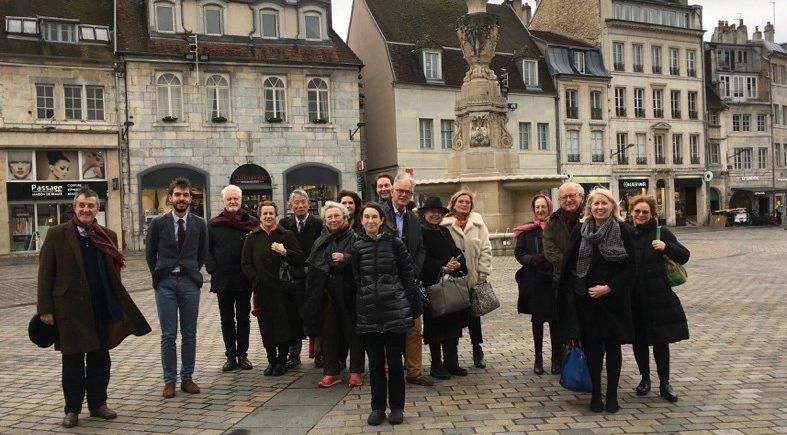REPORT: FPS Visit to Besançon: Boucher, Rococo and Chinoiserie
Patricia Ferguson
In mid–February, the French Porcelain Society organised a visit to see the stunning exhibition « Une des provinces du Rococo. La Chine rêvée de François Boucher » (“A province of the Rococo: François Boucher’s idealised China”), held at the at the Musée des beaux-arts et d’archéologie de Besançon (MBAAdeB), the historic capital of the Franche–Comté. The visit was organised by John Whitehead.
It began in Paris the day before with a tour led by John Whitehead of the 18th–century decorative art gallery at the Musée du Louvre, restored in 2013.
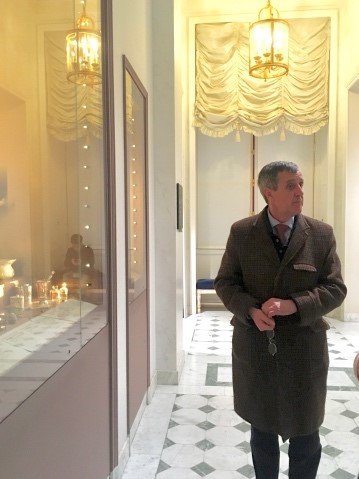
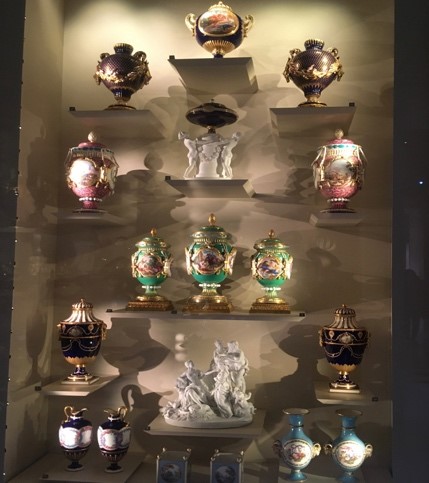
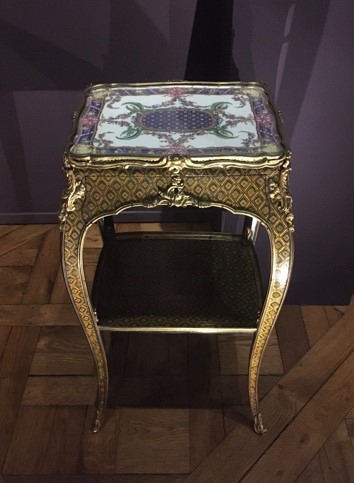
Among my personal highlights was an easily portable table en chiffonière, used to store writing materials, by Bernard van Risenburgh II, dated 1764. The base of the table is decorated with vernis Martin in a trellis pattern intertwined with small flowers and the porcelain tray top was probably complete with an ensuite individual set for drinking hot beverages. The marchand-mercier Simon Philippe Poirier commissioned the table, providing the costly Sèvres porcelain and the gilt bronze mounts. Before the tour I dropped in on Galerie Dragesco–Cramoisan, on rue de Beaune, as did others; their new display system looked spectacular. We finished the day with an amazing dinner at Macéo, behind the Jardins du Palais Royal, hosted by four generous members.
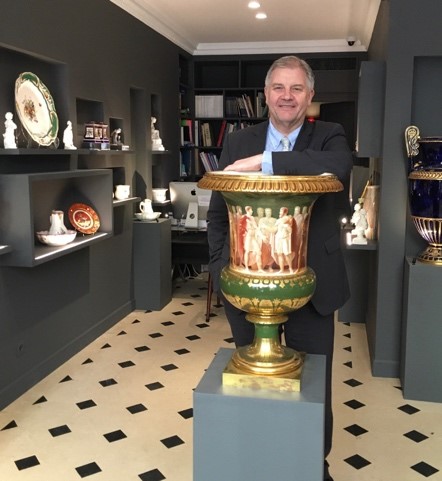
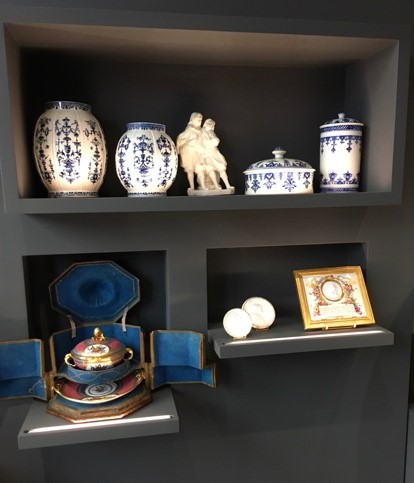
The next day at the crack of dawn, our group met at the Gare de Lyon, at 6:51am for the two–and–half hour train ride to Besançon. We began with a walking tour, starting at the Citadel, a 17th century fortress overlooking the city, before descending to the old quarter. Our meander included a stop at the Cathedral St. Jean, a Romanesque church with paintings by Natoire, de Troy and van Loo, hung in the 1730s apse and glimpsing through the window of the 24–hour museum, into the historic display in La Pharmacie Baratte, housed in the building where Victor Hugo was born. After a jovial coffee–break courtesy of several members, our guides, which included the Parisian art historians Vincent Bastian and Sylvia Vriz, were able to talk us into the Musée du Temps, in the 16th century Renaissance Palais Granvelle. Here, we discovered a Pendule [de Grand Salon] dite de L’Horlogerie, c. 1823, on loan from Sèvres: Cité de la Céramique, and described in the museum’s first catalogue, written by Alexandre Brongniart with Denis-Desire Riocreux, Description méthodique du musée céramique de la Manufacture Royale de Porcelaine de Sèvres, 1845. The three porcelain plaques on the sides recorded significant moments in the history of measuring time: a water clock or clepsydra; the first mechanical clock (‘Les Horloges a Rouages’) constructed by Jacques Dondis in Padua in ‘1364’ [sic]; and the pendulum clock invented by Christiaan Huygens in 1656. The panels were designed by Alexandre-Evariste Fragonard, in 1823, and the colours were assigned by Auguste–François Desmoulins, before it was painted by Nicolas–Marie Moriot. We then repaired to Bistrot La Charrette for a delicious lunch.
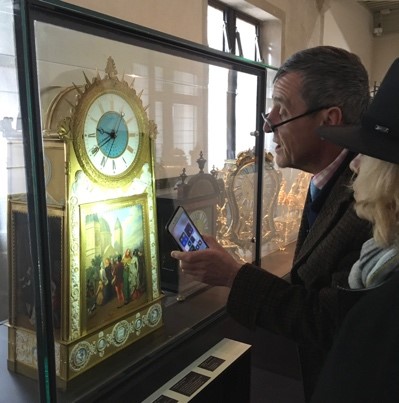
At 14:00pm, we gathered beside Fontaine de la Place de la Révolution, outside the recently renovated MBAA, to meet the curator of the exhibition Yohan Rimaud. The exquisite exhibition showcases the genius of François Boucher and his contribution to the taste for all things Chinese during the Rococo period with international loans from several museums and private collectors. Significantly, for almost two hundred years the Museum has owned ten oil cartoons painted by Boucher in 1742 for the Beauvais tapestry manufactory’s second ‘Tenture chinoise’, all six of which were hung on the walls of the main room. It was a unique opportunity to study the small cartoons beside the finished tapestries.
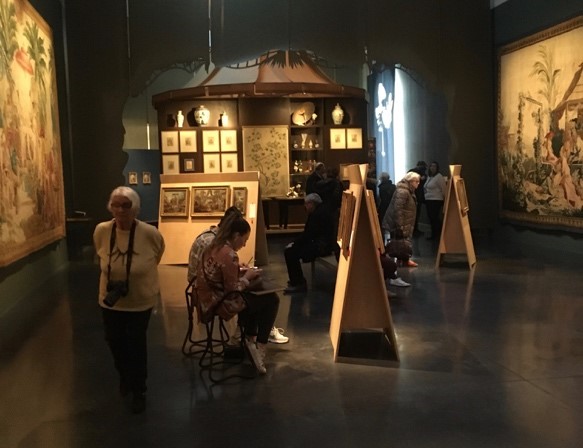
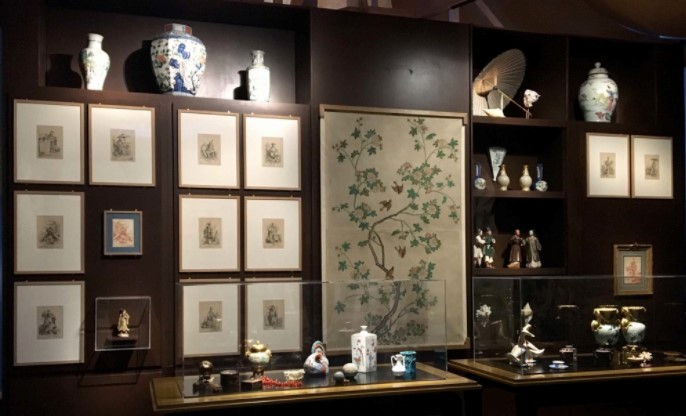
The first part of the exhibition recreated the atmosphere of a marchands–merciers of the 1730s with a selection of exotic objects displayed to suggest the interior of a shop. This was followed by a selection of Asian porcelain and objet d’art resembling those Boucher once owned as recorded in an auction in Paris in 1771 of his collection, which numbered 700 pieces. As he became better known as a connoisseur of Chinese art, he was the obvious choice as designer of the chinoiserie tapestry series. The next room was designed as an intimate Salon, with some of Boucher’s best loved paintings of interiors filled with objects from the Orient. These were hung beside several pieces of furniture with designs painted in blue and white from the Comtesse de Mailly’s blue apartment at the Château de Choisy.
Throughout the exhibition were examples of the artist’s drawings featuring Asian subjects and engraved copies, which were to inspire craftsmen all over Europe. Among these, ten examples of luxury porcelain produced at the Vincennes and Sèvres factory, some borrowed from several private collections, were displayed in the final room often with their print sources. These included a rare group of polychrome teawares reuniting a déjeuner, 1745–48, such as this exquisite saucer from the Belvedere Collection, all perhaps once owned by the manufactory’s founder Jean–Louis Henri Orry de Fulvy. Two pairs of seaux à bouteille, 1750–52 and 1754, painted in camaieu rose, and a pair of pots–pourri ‘girondoles’ or ‘à bobèches’, 1761, in ‘petit verd’, painted with simplified versions of Boucher’s chinoiseries by Dodin, the latter from the Louvre Museum.
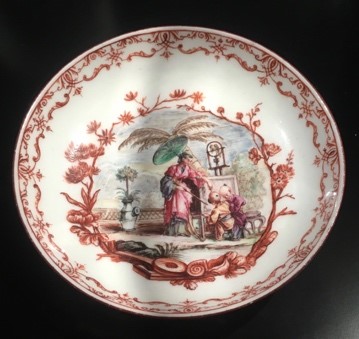
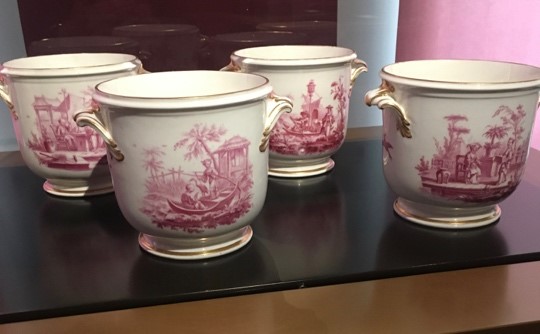
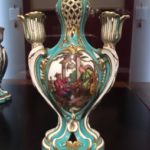
A small contingent headed off to speak at a conference in Romont, Switzerland on Chinese reverse painted mirrors, and the rest were last seen heading to the train station for various locales.
Many thanks to Yohan Rimaud, Vincent Bastien, and John Whitehead for a wonderful visit to enjoy this chinoiserie province of the Rococo, as so described by the Goncourt brothers.
The exhibition closed 2 March 2020, and there is an exhibition catalogue, Une des province du rococo. La Chine rêvée de François Boucher, 2019 by Yohan Rimaud; Stéphane Castellucio; David Pullins; Guillaume Faroult; Jean Vittet; Françoise Joulie; Kristel Smentek; Alaistair Laing; Perrin Stein; Marie-Laure De Rochebrune; Vincent Bastien.

